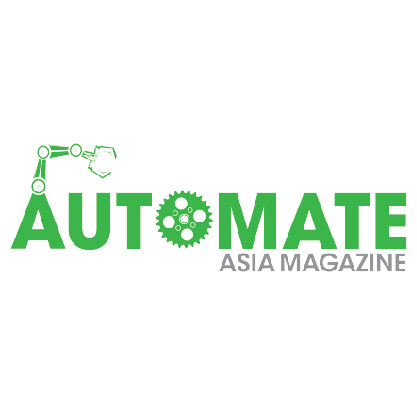‘Industry 5.0 about Machines Collaborating with Skilled Workers Instead of Replacing Them’
- Automate Asia Magazine

- Feb 20, 2024
- 3 min read
In Industry 5.0, humans are at the heart of the processes. It’s about finding ways for digital solutions and humans to collaborate effectively. While Industry 4.0 focused on advanced technology and automation, Industry 5.0 emphasizes the role of humans working in conjunction with digital solutions.
By Barath Shankar Subramanian
The world is changing faster than ever, and we’re on the brink of a new revolution – Industry 5.0. To understand what this means and how it differs from Industry 4.0, let’s take a trip through the industrial ages.
The first phase kicked things off with mechanization and steam power, transforming agrarian societies into industrial ones. It was a time when the power of steam and machinery revolutionized manufacturing. Before this, people relied on manual labor and animal power to produce goods. Steam engines changed everything, allowing factories to produce goods at a scale and speed previously unimaginable.
The second phase was powered by electricity and marked by assembly lines and mass production. Electricity made it possible to power factories more efficiently than ever before. Assembly lines, pioneered by Henry Ford in the early 20th century, allowed products like automobiles to be made with incredible efficiency. This era saw a dramatic increase in the availability of consumer goods.
The next step was integrating computers into manufacturing processes. It was a game-changer, as computers enabled automation and precision that were previously unattainable. This era brought us CNC (Computer Numerical Control) machines, which could produce complex parts with incredible precision, and it laid the groundwork for the digital transformation that was yet to come.
And then Industry 4.0 was a major leap forward, bringing in the integration of cyber-physical systems, the Internet of Things (IoT), big data, and artificial intelligence (AI) into industrial processes. This revolution was marked by machines communicating with each other and with humans in real-time.
Factories became smarter and more efficient, thanks to sensors that could monitor equipment health and provide data for predictive maintenance. Production lines were optimized using AI algorithms, and supply chains became more responsive and adaptive.
And now, we find ourselves at the threshold of Industry 5.0. This phase doesn’t discard the technological advances of the past; rather, it builds upon them. It takes transformative technologies like IoT, sensors, automation, and robotics and integrates them with something crucial – humans.
In Industry 5.0, humans are at the heart of the processes. It’s about finding ways for digital solutions and humans to collaborate effectively. While Industry 4.0 focused on advanced technology and automation, Industry 5.0 emphasizes the role of humans working in conjunction with digital solutions.
This shift addresses the critical need for a harmonious integration of technology and the human element. Industry 5.0 recognizes that technology alone isn’t enough to solve all challenges. Humans thus form the center of progress. What Industry 5.0 does is aim to achieve results that surpass what either machines or humans can accomplish in isolation.
Imagine a manufacturing scenario. How can AI and digital solutions optimize material input? Traditionally, people would manually sort hazardous materials, a risky and labor-intensive task. But in Industry 5.0, we can add an AI layer to visually define particle size distribution, and machines can sort the particles accordingly. Humans initiate the process and provide input, while machines take over the sorting task, especially in situations like coal plants.
Let’s consider an example from one of our portfolio companies, Detect Technologies. They recognized that humans can’t catch safety violations and potential hazards every time, as the human eye can only perceive so much. Detect Technologies combined the efficiency of digital solutions, like cameras and monitoring algorithms, with real-time scanning for deviations, safety violations, and potentially fatal situations. These systems trigger alerts for timely interventions, significantly improving workplace safety.
In Industry 5.0, the goal is to achieve results that surpass what either machines or humans can accomplish in isolation. This synergy allows for greater innovation, efficiency, and the ability to address complex challenges that require both technological prowess and human intuition.
When humans and machines collaborate harmoniously the results can be extraordinary. Machines excel at data-intensive, repetitive tasks that ensure precision and consistency, humans on the other hand contribute the nuanced decision-making and emotional intelligence required in complex situations.
In essence, Industry 5.0 represents a new phase in industrial development were technology and human expertise work together symbiotically. It acknowledges that while technology has revolutionized manufacturing, the unique qualities of human intelligence and adaptability remain invaluable and essential in driving progress and achieving new heights in the industry.
When humans and machines collaborate harmoniously, the results can be extraordinary. Machines handle data-intensive, repetitive tasks with precision, while humans provide critical thinking, creativity, adaptability, and problem-solving abilities.
So, as we stand at the brink of Industry 5.0, we can see that it’s not about replacing humans with machines. Instead, it’s about creating an environment where machines and skilled workers can collaborate seamlessly. In this scenario, machines complement human skills, and human expertise enhances the capabilities of the machines.
Barath Shankar Subramanian is Partner at venture capital firm Accel. Views expressed are the author’s own.
Source: www.financialexpress.com





-01.jpg)



